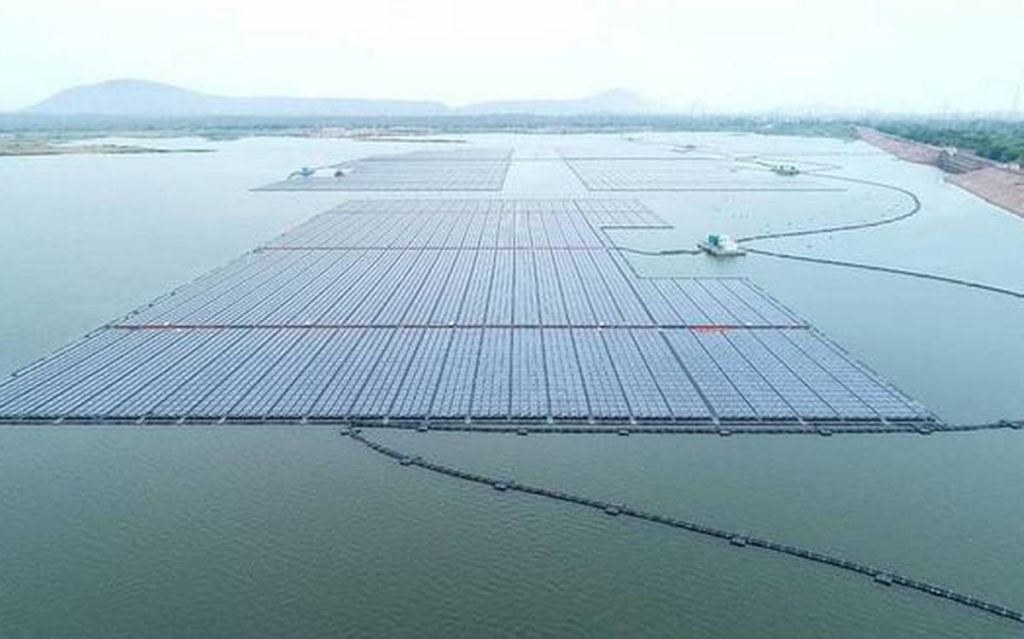By 2022, India hopes to produce 100 gigawatts of solar energy. Such a large-scale undertaking may appear to be impossible at first. However, the country’s long-term energy objectives may not be too tough to attain.
By 2030, India wants to have 450 GW of renewable energy capacity, with sun energy accounting for around 280 GW of that. Because of the country’s geographical location and geography, it has a lot of potential for insolation. This provides the country with a competitive advantage over its competitors.
With a capacity of 2,245 megawatts, the Bhadla solar park in Rajasthan, India, is the world’s largest solar power plant. Currently, crystalline silicon is used in 90% of solar photovoltaic (PV) panel installations in India, with a maximum efficiency of around 22%. Other technologies, such as “Perovskite crystal-coated panels,” are being researched to increase this efficiency to around 27%. PVs also gained the most dominating place on the global energy stage as efficiency improvements led to price reductions.
According to the UN Environment Programme’s Global Trends in Renewable Energy Investment 2019 study, global investment in new renewable energy capacity has exceeded $2.5 trillion over the last decade, with sun power capacity installed exceeding other generation methods.

The cooling impact of the surrounding water allows floating solar panels to produce up to 10% more electricity and prevents module breakdown. In India, the following floating solar plants are being developed:
NTPC, Ramagundam solar power plant. Capacity – 100 MW. Estimated investment – ₹4.32bn
Omkareshwar Dam floating solar farm. Capacity – 600MW. Estimated investment – ₹30 bn
NTPC, Kayamkulam solar project. Capacity – 105MW. Estimated investment – ₹3.43 bn
However, India has already established itself as a global leader in sun-generated energy development, having met its prior objective of 20 GW by 2022 – far ahead of schedule. The country also intends to use cutting-edge technology to create a solar model.

Managing and sustaining large-scale solar plants could be difficult for India because it requires various electrical components, which it now imports from China and other nations. India’s present reliance on imports for photovoltaic cells is a major stumbling block.
Another stumbling block is the renewable sector’s financing rates, which are approximately 12-14 percent, discouraging businesses from investing in its installations. Before embarking on a project of this magnitude, it must carefully assess the availability of technical components, people, and site selection.
Despite the limitations and hurdles, this industry is now looking at how digital tools might help them unleash more of the sun’s power. During the pandemic, India’s insolation business received a lot of help from the government. The government has taken initiatives to assist the sector, including lowering the repo rate, making solar plant O&M a vital service, abolishing tariff caps for solar tenders, and the PLI scheme, among others.
Insolation module manufacturers were encouraged to submit bids to set up manufacturing operations in India earlier this year, with the IREDA promising them perks under the PLI Scheme. When it comes to the modules, this is a big step toward reducing reliance on imports. This will lessen reliance on oil firms and, in turn, reduce fuel imports.
As the rest of the world watches, India has a big chance to tap into its resources, bring in cutting-edge technology, and leverage its geological advantage to become a worldwide manufacturing centre for renewable energy. To increase domestic sun energy manufacturing, a policy framework that includes both tariff and non-tariff restrictions is required.
In India, solar PV tariffs have dropped to $2.44 per kilowatt-hour (kWh) from around $15 per kWh during the last decade. More improvements and developments are expected in the coming decade, as the country has mastered the skill of building power plants with a capacity of thousands of megawatts.
Here’s how technology is helping to set up solar structures and how it can make the process more efficient. When it comes to renewable energy, storage will become increasingly important as demand rises. Plants will be more flexible for fluctuating demand if they include monitoring via the Internet of Things and automation. Solar cells made of silicon, for example, are a well-established technology. Perovskite solar cells, which are synthetic hybrid organic-inorganic substances, could eventually replace them.
Asset and demand-side management will be critical, with data analytics and storage digitization potentially playing a significant role. In the sphere of the sun and renewable energy, there are countless possibilities for innovation. As solar continues to gain popularity, innovation in sun energy plant design and grid stability will aid in the development of new laws and standards.

India’s future with Solar power:
It will be fascinating to see how India uses these evolving technology to address numerous energy-related concerns. Digitization provides unrivalled productivity gains, and cutting-edge technology is lowering development costs. Nearby China supplies over 85% of India’s solar cells and modules.
However, within the next five years, it intends to manufacture 36 GW of solar components domestically. Furthermore, it has a sufficient number of IT professionals that can assist in the development of IT-based solutions. India would be able to easily meet long-term renewable energy ambitions if it continues to build on technological advances.
Also Read:





